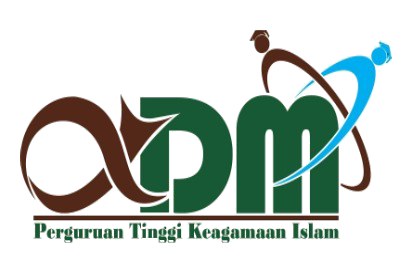Optimizing the Nutritional Needs of Toddlers with the Simplex Method Using POM-QM for Stunting Prevention
Keywords:
Nutrition Optimization, Simplex Method, Stunting in Toddlers, POM-QM Application, Fulfillment of Nutritional NeedsAbstract
This research aims to develop an optimization mathematical model that can help meet the daily nutritional intake needs of toddlers as an effort to prevent stunting. The Simplex method is applied in this model to determine food combinations that meet the standards of nutritional needs at minimal cost to take into account budget constraints and availability of foodstuffs, so that they can be adapted to diverse socioeconomic conditions. The POM-QM application is used as a calculation tool in applying the Simplex method, so that the optimization process becomes more practical and accurate. Mathematical modeling is carried out by compiling a function of objectives in the form of minimizing the cost of consuming foodstuffs that meet the daily nutritional needs of toddlers, including protein, fat, carbohydrates, iron, vitamin A, and vitamin C. The optimization results showed that nutritional needs could be optimally met with a combination of vegetable soup consumption of 22.5 grams (), Tempe 8.476 g (), and banana 4.5 g (), with a total minimum cost of IDR 146,928. The nutrient content of the combination exceeds daily needs, such as protein (241.41 g), fat (274.06 g), Fe (82.93 mg), as well as vitamin A (450 RE) and vitamin C (45 mg), while carbohydrates are fulfilled exactly as much as 220 grams. These results show that the optimization approach can be used to design a balanced, nutritious diet that is cost-efficient as an effort to prevent stunting in toddlers.
Downloads
References
[1] I. Choliq, D. Nasrullah, and M. Mundakir, “Pencegahan Stunting di Medokan Semampir Surabaya Melalui Modifikasi Makanan Pada Anak,” Humanism J. Pengabdi. Masy., vol. 1, no. 1, Apr. 2020, doi: 10.30651/hm.v1i1.4544.
[2] S. Rumlah, “Masalah Sosial dan Solusi Dalam Menghadapi Fenomena Stunting Pada Anak,” Krinok J. Pendidik. Sej. dan Sej., vol. 1, no. 3, pp. 83–91, Dec. 2022, doi: 10.22437/krinok.v1i3.21852.
[3] R. Alfarisi, Y. Nurmalasari, and S. Nabilla, “Status Gizi Ibu Hamil Dapat Menyebabkan Kejadian Stunting Pada Balita,” J. Kebidanan Malahayati, vol. 5, no. 3, pp. 271–278, 2019, doi: 10.33024/jkm.v5i3.1404.
[4] Abdul Haris and Miftaakhul Amri, “Peran Zakat dalam Mengatasi Stunting dan Gizi Buruk di Kabupaten Brebes,” Mabsya J. Manaj. Bisnis Syariah, vol. 6, no. 1, pp. 1–30, Mar. 2024, doi: 10.24090/mabsya.v6i1.10706.
[5] Aris Toening Winarni, “Memutus Mata Rantai Stunting: Transformasi Pendampingan Keluarga Oleh Tim Stunting Kecamatan Kunduran Blora,” Public Serv. Gov. J., vol. 5, no. 1, pp. 291–309, Jan. 2024, doi: 10.56444/psgj.v5i1.1355.
[6] J. Arifa, H. R. Putri, T. A. Tina, Y. Indrasoni, and M. Elvira, “Penyebab Utama Stunting: Faktor Gizi dan Sosial Ekonomi : Studi Kasus Nagari Garagahan,” TEKNOVOKASI J. Pengabdi. Masy., pp. 136–140, Aug. 2024, doi: 10.59562/teknovokasi.v2i3.3666.
[7] B. A. Noer, Belajar Mudh Riset Operasional. Yogyakarta: C.V Andi, 2010.
[8] T. T. Dimyati and A. Dimyati, Operation Research Model-model Pengambilan Keputusan. Bandung: Sinar Baru Algensindo, 2002.
[9] E. T. Susdarwono, “Pemrograman Linier Permasalahan Ekonomi Pertahanan: Metode Grafik Dan Metode Simpleks,” Teorema Teor. dan Ris. Mat., vol. 5, no. 1, pp. 89–104, 2020, doi: 10.25157/teorema.v5i1.3246.
[10] Salsabilah Daryani, Syaharani Sunggu Aritonang, and Suvriadi Panggabean, “Optimasi Keuntungan Produksi UMKM Keripik Pisang Menggunakan Linear Programming Metode Simpleks Dan Software POM-QM,” J. Ris. Rumpun Mat. dan Ilmu Pengetah. Alam, vol. 3, no. 1, pp. 69–88, Dec. 2023, doi: 10.55606/jurrimipa.v3i1.2249.
[11] E. Febriani, A. Aden, and I. Ilmadi, “Optimalisasi Biaya Minimum Dalam Pemenuhan Asupan Kebutuhan Gizi Makanan Anak Usia Sekolah Dengan Metode Simpleks,” MathVision J. Mat., vol. 4, no. 1, pp. 36–41, Mar. 2022, doi: 10.55719/mv.v4i1.353.
[12] R. Clacier, R. Fitriani, and W. Wahyudin, “Optimalisasi Keuntungan Menggunakan Program Linier dengan Metode Simpleks dan POM-QM pada Produksi Tahu,” J. Serambi Eng., vol. 8, no. 2, Mar. 2023, doi: 10.32672/jse.v8i2.5721.
[13] N. Nasriyah, R. Rusnoto, and S. Supriyanto, “Optimalisasi Perbaikan Gizi Keluarga Dalam Pencegahan Stunting Melalui Pemberdayaan Masyarakat,” J. Abdimas Indones., vol. 4, no. 2, pp. 128–135, Jan. 2023, doi: 10.26751/jai.v4i2.1702.
[14] R. P. Naulia, H. Hendrawati, and L. Saudi, “Pengaruh Edukasi Gizi Terhadap Pengetahuan dan Sikap Ibu dalam Pemenuhan Nutrisi Balita Stunting,” J. Ilmu Kesehat. Masy., vol. 10, no. 02, pp. 95–101, Jun. 2021, doi: 10.33221/jikm.v10i02.903.
[15] Y. Rahma, D. Suhartini, and S. Maryana, “Aplikasi Panduan Gizi Makanan Balita Berbasis Android,” J. Teknoinfo, vol. 16, no. 2, p. 238, Jul. 2022, doi: 10.33365/jti.v16i2.1790.
[16] Sugiyono, Metode Penelitian Kuantitatif, Kualitatif dan R&D. Bandung: Penerbit Alfabeta, 2016.
[17] M. Amaliyah, R. D. Soeyono, L. Nurlaela, and D. Kritiastuti, “Pola Konsumsi Makan Remaja Di Masa Pandemi Covid-19,” J. Tata Boga, vol. 10, no. 1, pp. 129–137, 2021, [Online]. Available: https://ejournal.unesa.ac.id/index.php/jurnal-tata-boga/article/view/38402/33857
[18] M. Mujiono and S. Sujianto, “Implementasi Metode Optimalisasi Jumlah Produksi dengan Menggunakan Linier Programing,” Ind. Inov. J. Tek. Ind., vol. 10, no. 2, pp. 65–69, Sep. 2020, doi: 10.36040/industri.v10i2.2797.
[19] Romadoniyah, “Literatur Review : Faktor-Faktor yang Mempengaruhi Kejadian Stunting pada Balita di Negara Berkembang,” J. Pendidikn Tambusai, vol. 6 Nomor 2, no. 2614–3097, pp. 11647–11656, 2022.
[20] B. I. Alfarisi et al., “Mengungkapkan Kesehatan Melalui Angka: Prediksi Malnutrisi Melalui Penilaian Status Gizi dan Asupan Makronutrien,” Pros. SNPPM-5, vol. 5, pp. 299–311, 2023, [Online]. Available: https://prosiding.ummetro.ac.id/index.php/snppm
[21] A. J. Fikri, S. Aini, R. S. Sukandar, I. Safiyanah, and D. Listiasari, “Optimalisasi Keuntungan Produksi Makanan Menggunakan Pemrograman Linier Melalui Metode Simpleks,” J. Bayesian J. Ilm. Stat. dan Ekon., vol. 1, no. 1, pp. 1–16, Mar. 2021, doi: 10.46306/bay.v1i1.1.
[22] A. Amanda Hidayah, E. Harahap, and F. H. Badruzzaman, “Optimasi Keuntungan Bisnis Bakery Menggunakan Program Linear Metode Simpleks,” J. Mat., vol. 21, no. 1, pp. 77–83, 2022.
[23] I. Mardalena, Dasar-dasar Ilmu Gizi Dalam Keperawatan. Yogyakarta: Pustaka Baru Press, 2021.
[24] R. A. S. Wairooy and R. Rosida, “Penyuluhan Pangan Sehat : Kue Lidah Kucing Daun Kelor di Posyandu Balita Dusun Oro-Oroombo,” DIANDRA J. Pengabdi. Kpd. Masy., vol. 3, no. 1, pp. 48–54, Apr. 2024, doi: 10.33005/diandra.v3i1.45.
[25] D. N. Inten and A. N. Permatasari, “Literasi Kesehatan pada Anak Usia Dini melalui Kegiatan Eating Clean,” J. Obs. J. Pendidik. Anak Usia Dini, vol. 3, no. 2, p. 366, Jul. 2019, doi: 10.31004/obsesi.v3i2.188.
[26] H. Munawaroh et al., “Peranan Orang Tua Dalam Pemenuhan Gizi Seimbang Sebagai Upaya Pencegahan Stunting Pada Anak Usia 4-5 Tahun,” Sentra Cendekia, vol. 3, no. 2, p. 47, Jun. 2022, doi: 10.31331/sencenivet.v3i2.2149.
Downloads
Published
Issue
Section
License
Copyright (c) 2025 Nurrochmah Sri Rahayu, Saluky (Author)

This work is licensed under a Creative Commons Attribution-ShareAlike 4.0 International License.
All articles published in Krestama: Journal of Mathematics and Its Applications are licensed under the Creative Commons Attribution-ShareAlike 4.0 International License (CC BY-SA 4.0).
This license allows anyone to:
-
Share — copy and redistribute the material in any medium or format,
-
Adapt — remix, transform, and build upon the material for any purpose, even commercially,
as long as appropriate credit is given, a link to the license is provided, and any changes are indicated.
If you remix, transform, or build upon the material, you must distribute your contributions under the same license as the original.
???? Read the full license: https://creativecommons.org/licenses/by-sa/4.0/











